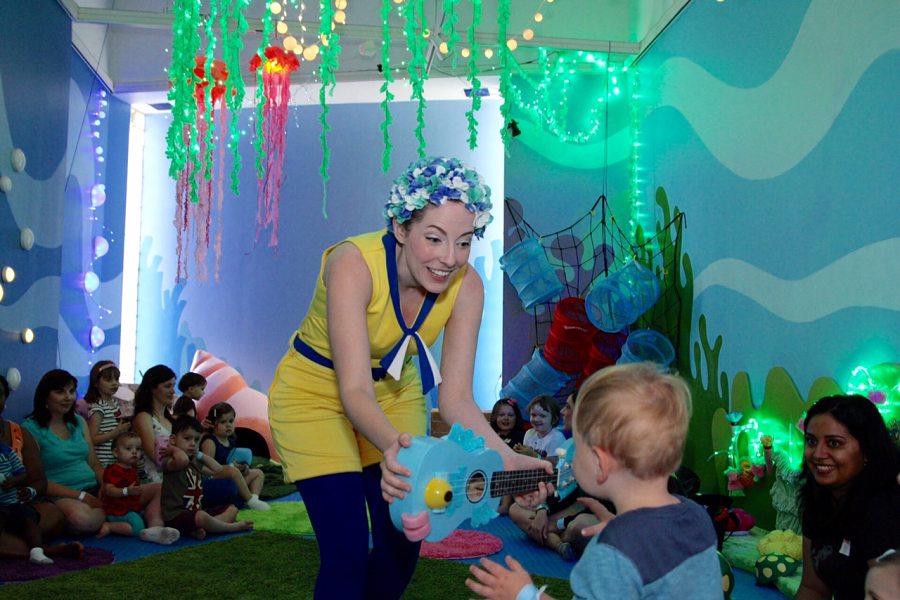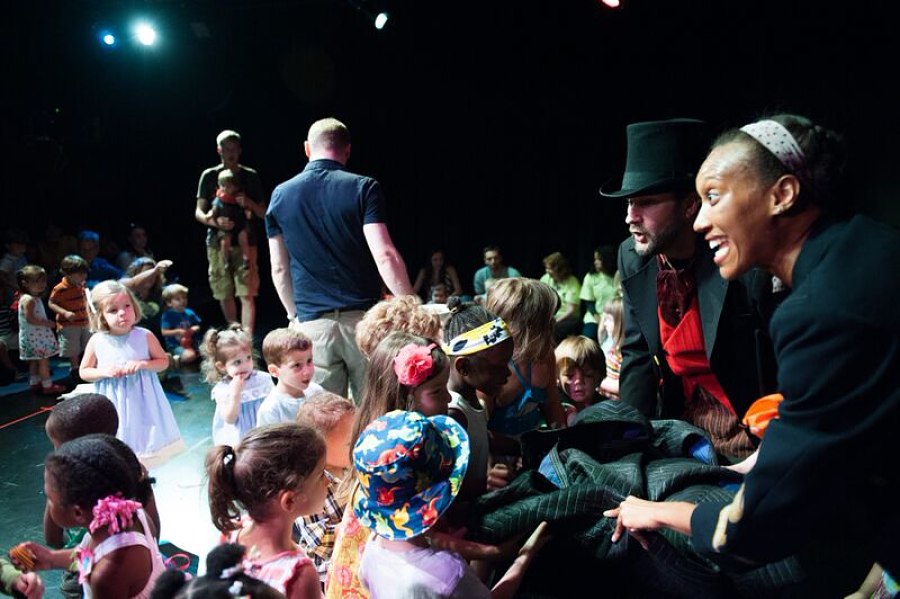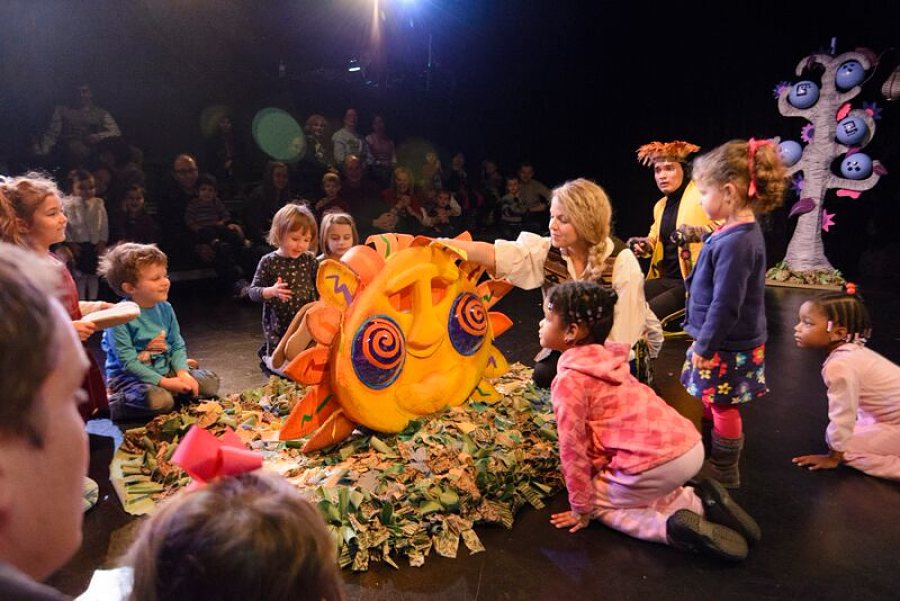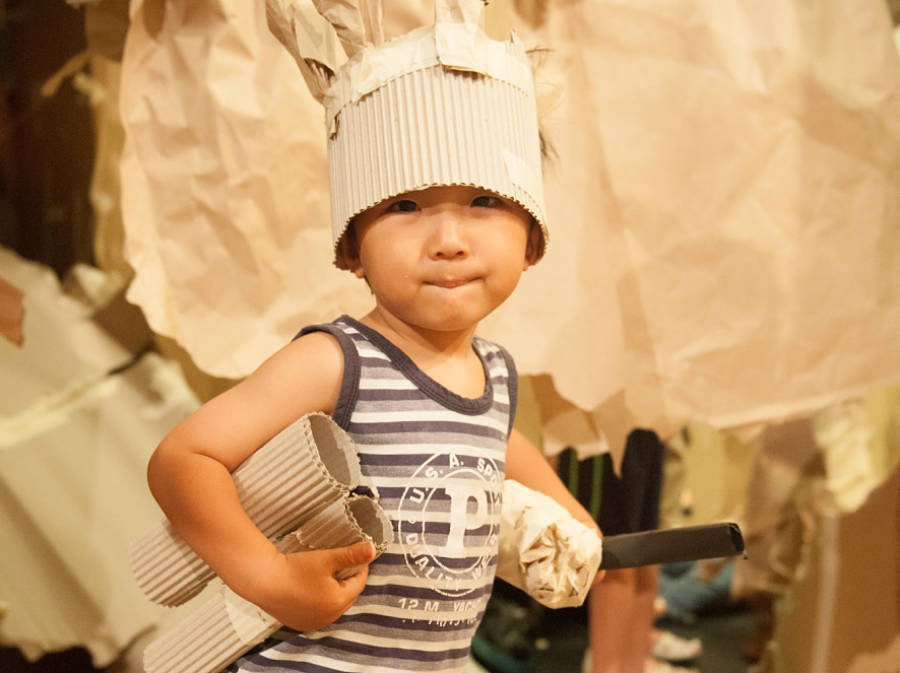ATLANTA and NEW YORK CITY: “This is by far the most avant-garde work we do at the Alliance,” says Christopher Moses, the theatre’s education director and associate artistic director, with a chuckle. He’s talking about an interactive, experiential installation called Blub Blub, less a play per se than an underwater-themed “playscape” for audiences of under-two-year-olds, created as a showpiece for Toddler Takeover, a three-day event at Atlanta’s Woodruff Center that kicks off today and runs through Sunday (Mar. 29-31).

Meanwhile, at New York City’s New Victory Theatre, the Australian company Polyglot Theatre is staging a similarly intended “interactive play space” called Paper Planet (May 30–June 7), a cardboard-and-paper forest in which audiences aged 2 and up collaborate with the performers to create the costumes, set and even the narrative arc for a one-hour theatrical experience. “We don’t perform to the children—we’re sort of reacting to them,” says Polyglot artist Nick Barlow.
Both Blub Blub and Paper Planet represent the cutting edge of theatre for the pre-K set—a concept that barely existed a few years ago, particularly in the U.S., but which has increasingly taken hold at theatres around the world, led in part by companies from Denmark, Scotland and Australia, including Polyglot and Windmill Theatre. Stateside, the Alliance has been at the forefront of developing work in this area, along with such companies as Imagination Stage in Bethesda, Md., Minneapolis’s Children’s Theatre Company and Chicago’s Emerald City.
While the work in this area ranges along a continuum between performative and interactive, the trend has been toward more immersive and participatory theatre experiences, not least because the audiences themselves seem to demand it.
Polyglot, for instance, began as a traditional children’s theatre company, touring puppet shows to Melbourne-area schools. But they soon changed their focus to interactive play-based theatre, making an international splash with the giant-cardboard-box collaboration We Built This City. The reason for the aesthetic change was very simple, Barlow explains: “Kids would wanna get onstage with you. So we said, ‘Let’s not even have that barrier. We will work with them.’ “
His colleague Mischa Long chimes in: “My first job with the company was as a child wrangler, keeping kids off the stage during performances. Now I’m dragging them into the play!”

For its part, Atlanta’s Toddler Takeover has brought on extra wranglers—er, volunteers to help manage expected overflow crowds for its already-sold-out roster of events, which include not only six performances for kids under five—from TMarq’s Beckett-inspired Waiting for Balloon to the Mexican folk tale The Lizard & El Sol and Little Raindrop Songs, created by Michael Haverty with original music by Japanese “pajama pop” band Lullatone—but also offerings from the adjacent High Museum of Art, where Saturday is “Mo Willems Day,” and Atlanta Symphony Orchestra. An outdoor piazza between the three arts venues will buzz with activity between events, Moses says.
“Some families are coming for all three days, but most buy a pass for a day,” he adds, noting that a grant from the Lettie Pate Evans Foundation has made it possible to offer patrons under five years old free admission; day passes for adults are $30 each. Now in its second year, the Toddler Takeover, like many such arts gatherings, serves partly as a festive end in itself, but also as an introductory sampler. “A big part of it is getting people in the door,” Moses says. “As we’re expanding our programming for this age group, we want to say to people, ‘Thanks for coming, and here’s all the other activity we’ve got going on.’ “
While the Alliance has done much of its work in this area with Atlanta-based artists, Moses wants to see the Toddler Takeover grow into a national event that will present pieces from around the country. In New York, the New Victory’s niche has been chiefly to present work created outside New York, particularly internationally, but the company also boasts a robust new-works development program for local and national artists.
Clearly, theatre for the very young is more active than it’s ever been—possibly a hopeful sign for a field concerned about its future with young audiences. Perhaps most encouraging is that this movement isn’t taking its cues from the top but following the lead of its young theatregoers. In describing Paper Planet, Barlow could be talking about toddler theatre in general when he says, “The theme is that they’re creating the world. It’s not our world. The kids are in control.”



